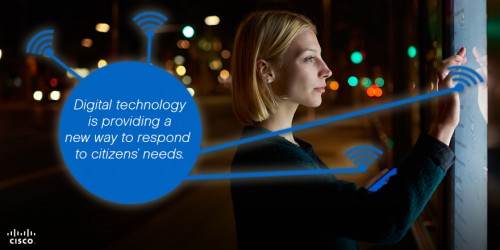
Citizen-centric Services in the Digital Era
Governments today face a challenging and rapidly changing environment. Ambitious reforms and revenue generating operations are taking precedence, even while a trend of cost cutting and budget tightening is taking effect. This is presenting a re-envisioned opportunity to truly bring public service to the 21st century. And these transformative efforts are coalescing around governments embracing the digital age.
The oncoming future of citizen services is less and less in the hands of governments alone. The onslaught of digital technologies has empowered the evolution of long-held government practices. The move to citizen-centric services that have been redesigned around the needs of the community user is here.
https://www.youtube.com/watch?v=klZCkxEQfIs
What Have You Done for Me lately?
We all want the most out of our government representatives. We want them to be transparent, deliver simple and effective public services. And most importantly, we want to be heard, to understand government leaders’ ability and willingness to address public concerns, requests, and challenges. The digital technology wave is providing a new way to respond to these basic needs, regardless of distance or boundaries.
In today’s post, our digital citizen has an appointment with the city’s Chief Information Officer (CIO) to tour the latest projects underway that are working to improve the overall community experience.
The first stop will be the citizen interaction pods to connect with local government leaders. The CIO and our citizen check out the community’s newest tool for engaging with the wider public. The ability to communicate with citizens in different ways can help meet the challenge of rising expectations. This seemingly fanciful concept is already underway and very much a reality in Australia’s third most populous city, Brisbane; opening up accessibility to government leaders from a location as convenient as a local shopping center. Making services more user-friendly and effective, improving the quality of decision-making, promoting greater trust in government institutions, and enhancing public value.
Our next stop is the community’s prized museum. Our citizen witnesses the technological overhaul of the museum experience. This incorporates digital and mobile technology to bring a vibrant, interactive, and personalized exploration experience for each museum visitor, and to reach those not typically drawn to museums. Like Cleveland’s Museum of Art, which boosted its attendance by 39 percent, citizens and visitors have greater access to historical data, interpretive information, and other interesting facts about each museum piece in a variety of multimedia formats.
Next, our digital citizen and CIO are taking a stop at the telework hubs. By replacing commuting and travel with telework options whenever possible, strong indicators point to improved productivity of the workforce, reduced costs, higher capacity to attract and retain higher-skilled talent, and decreased carbon emissions with less drivers on the road. Like the government of Australia, which saves taxpayers $1.4 million AUD per month in travel costs, digital communities are encouraging remote working for both public and private employees; also reducing burden on road infrastructure, allowing for cleaner air, and decreasing energy consumption.
We will make our final stop at a community run organisation that is providing next-generation connectivity to improve quality of life and encourage economic growth by expanding access to information and a variety of public services. By linking public and private partners in their efforts, digital communities can foster low-cost, creative, local solutions like Ohio’s OneCommunity initiative that connects over 700 organizations and integrates network access across 24 counties or Harrow Councils MyHarrow service that provides access to over 760 public services on-line. Programs that address all major “pain points” of the community are now attracting new businesses, increasing educational opportunities by connecting school districts, higher education, museums and libraries, providing job training to low-income residents, and providing improved access to healthcare.
Like our citizen, we can now see a few of the many opportunities that are made possible in the digital community. Public sector organizations around the world are putting a stake in the ground to propel themselves into their digital transformations. In doing so, they are revolutionizing the citizen experience, spurring economic and revenue growth, reducing costs, improving productivity, and keeping communities safer.
Next Stop
Stay tuned for next weeks special edition post. And be sure to check back each week as we explore new themes, challenges and observations.
Additionally, you can click here and register now to get your IoE questions answered on how to become the next digital community.
Finally, we invite you to be a part of the conversation by using the hashtag # DigitalCitizen and by following @CiscoGovt on Twitter.
For more information and additional examples, visit our Smart+Connected Communities page and our Government page on Cisco.com.


